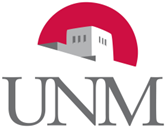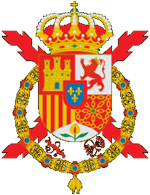
Genesis of the chair
The idea of creating the Prince of Asturias Chair in Information Science and Technology at the University of New Mexico(UNM) in Albuquerque, New Mexico, and endowed by Iberdrola, stems from a meeting of the then U.S. Ambassador to Spain Edward L. Romero with His Royal Highness the Prince of Asturias. In this meeting His Royal Highness agreed to the creation of an endowed chair in his name at the University of New Mexico in the general area of science and technology. Ambassador Romero then approached D. Iñigo de Oriol, President of Iberdrola, to seek its support for this initiative, which was concretized in a series of meetings during the year 2000 among representatives of UNM, the Embassy, the Royal House, and the then Spanish Ministry of Science and Technology.
After these meetings, UNM staff studied the Spanish National Science Plan and Iberdrola’s research and development plan in order to match both with UNM’s areas of excellence. UNM then selected the field of Information Science and Related Technology because a consensus emerged that an endowed chair in this area would provide the maximum benefit to both Spain and Iberdrola. It was acknowledged that, in its countless applications Information Science and Technology has tremendous potential to benefit people in their daily lives. We are now living in the so-called ”Information Age.” No other technology has revolutionized communication, commerce, and social interaction in the same way as computers, networking, increasingly realistic human-machine interfaces, and, above all, software, which is the real heart behind it all. Yet, this revolution is only in its infancy. In a few years, the current Internet may appear to us as archaic as the 19th century invention of the telegraph and the applications running on today’s computers as simple as a mechanical calculator. However, in order to achieve this, many scientific and technological challenges remain to be solved both in the areas related to software development and in those related to hardware and communications. The solutions for meeting these challenges will allow developing applications that are much more reliable and user-friendly and which at the same time will perform in a correct way much more complex tasks that will solve problems of a much higher conceptual level, contributing in a significant way to productivity, competitiveness, and welfare. The deep understating of these technologies, is already, and is expected to be much more in the future, an important competitive advantage as well as vital for social and economic progress. Because of all this, and because of the potential impact of this field, all national research plans, including those of the US, Europe, and, within Europe, of course, Spain, identify Information Science and Technology as one of their top priorities.
It is thus well justified that this Chair, which is the first one established in the name of the Prince at a prominent U.S. university in science and technology (the other two-at Georgetown University and Tufts University–are in the humanities) was created precisely in this area of Information Science and Technology. It is also only logical that the Chair was created in the United States and, in particular, in New Mexico: in today’s world of ever-increasing globalization, no country or industry can afford to ignore advances that are occurring in other parts of the globe. Accordingly, the progress of Spain as a modern industrial nation cannot be realized in isolation. It must be forged through linkages and cooperation with other countries, not only those in the EU, but with the United States as well. In particular, in the field of Information Science and Technology, the U.S. is a world leader in innovative research, design, and development of information systems and their applications to real world problems. In addition, Spain’s Planes Nacionales de Investigación Científica, Desarrollo e Innovación Tecnológica 2000-2003 and 2004-2007, or the ”National Science and Innovation Plans,” specifically call for increased international collaboration and educational opportunities for Spanish researchers. However, it is not a call for international participation for its own sake. Rather, the National Plans anticipate clear and direct benefits to Spain that can truly advance its scientific and technological base. And, within the United States, and from the point of view of science and technology, New Mexico has been an important hub of science and technology since World War II, when work started at the first laboratories in Los Alamos. Today, it is the home of Sandia National Laboratories and Los Alamos National Laboratory, which are world-class scientific research centers, which, in conjunction with the universities and high-tech industry, provide New Mexico with the highest number per capita of scientist-Ph.D.s of any state in the U.S. These national labs are international leaders in a wide range of areas, incl uding high-performance computing, materials science, nuclear security, and waste management.
Furthermore, from a cultural point of view, present-day New Mexico was part of Spain’s North American colonies until Mexican independence in 1821. The first European settlements in New Mexico were established in 1598 by a Spanish expedition led by Don Juan de Oñate. Thus, New Mexico is the oldest continuously inhabited Spanish settlement in the U.S. It is the heartland of Spanish culture in the United States. Over 40% of its population is Hispanic, the highest percentage of any U.S. state. Because of its heritage, New Mexico enjoys a special relationship with Spain and the Spanish royal family. Their Royal Highnesses, King Juan Carlos, Queen Sofia, and Prince Felipe have visited New Mexico, and the King received the University Medal from the University of New Mexico in 1987. Since the 1980’s, the Prince of Asturias has been the honorary president of the Hispanic Culture Foundation in Albuquerque. The Prince visited Albuquerque in October of 2000 to inaugurate the new USD $50 million National Hispanic Cultural Center, which is a project of the Hispanic Culture Foundation, and to announce the creation of the Chair. In addition to its cultural and historic ties, New Mexico is aggressively expanding its business and educational linkages to Spain and Iberoamerica. For example, theInstituto Cervantes, an agency of the Spanish Ministry of Foreign Affairs, established its third U.S. branch in October 2000 at the new National Hispanic Cultural Center in Albuquerque. Finally, the logic of establishing the Chair at the University of New Mexico is also clear. UNM is the fastest growing research university in the nation in terms of the increase in U.S. government funding for research and development since 1990. This rapid growth is the result of the high quality of its faculty and a policy to actively seek partnerships with national laboratories, private industry and universities throughout the United States, Iberoamerica and Spain. UNM is designated as a Hispanic-Serving Institution, in recognition of the fact that more than 25% of its students are Hispanic. Its Latin American programs are ranked in the top ten in the United States.
UNM also has a significant presence in Iberoamerica and Spain through collaborative research projects, international conferences, visiting professorships, and exchange students. In Spain, UNM participates in a faculty exchange program and an annual seminar with the Universidad de Granada’s law school, as well as in the development of joint research and academic projects with the Universidad de Extremadura, the Universidad de Santiago de Compostela, the Universidad Poltécnica de Valencia, the Universidad de Vigo, the Universidad de Granada and the Universidad de Alcalá. UNM also hosts the U.S. headquarters of the Ibero-American Science and Technology Education Consortium (ISTEC). With over 100 participating educational, research and industrial institutions in Spain, Iberoamerica and the U.S., ISTEC fosters scientific, engineering and technology education, joint international research and development efforts, and cost-effective vehicles for the application of technology. One of ISTEC’s programs is the Research and Development Laboratories initiative. The goals of this initiative are the design and installation of modular, flexible, and expandable laboratory facilities for education, research and development, and the provision of these services to private industry. UNM is one of 31 universities –and the only U.S. university– participating in this program. In the Universidad de Granada, this equipment is helping to train an estimated 100 undergraduate and graduate students. Other participating Spanish universities include the Universidad Carlos III, and the Universidad de Vigo, which is using its laboratories for research and the undergraduate training of 200 students. Further, UNM’s active partnerships with the U.S. Department of Energy’s Los Alamos National Laboratory and Sandia National Laboratories in a wide vety of projects creates one of the largest pools of cutting-edge researchers in the United States. These alliances have helped make UNM a recognized leader in Information Science and Technology, also particularly in super-computing, high-technology materials, and microelectronics.









